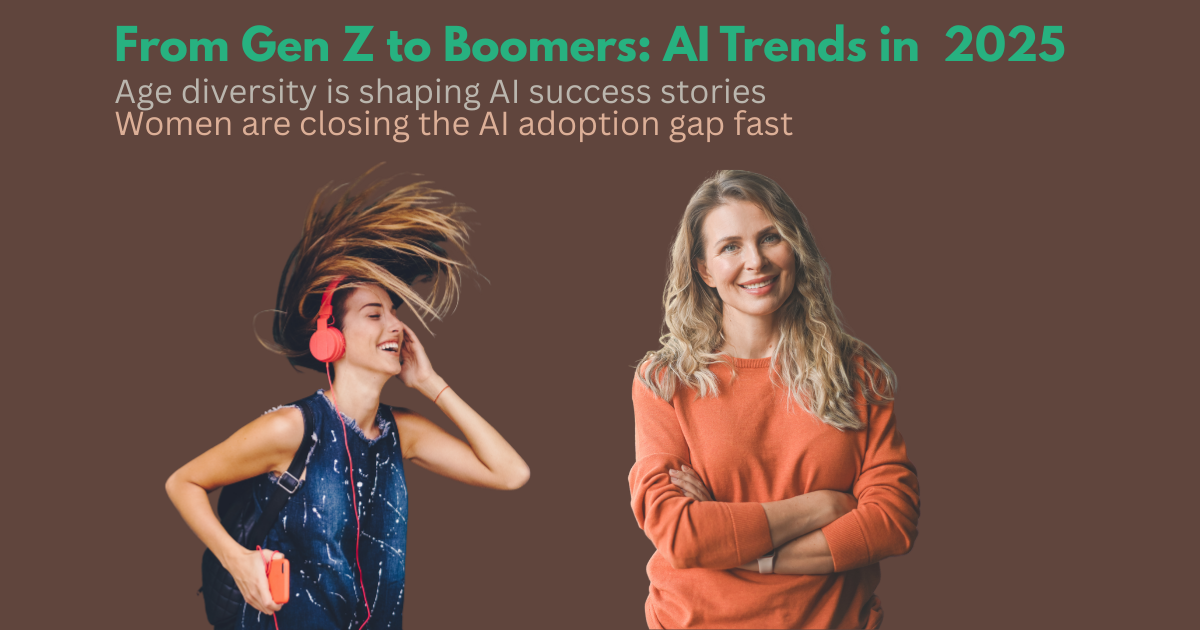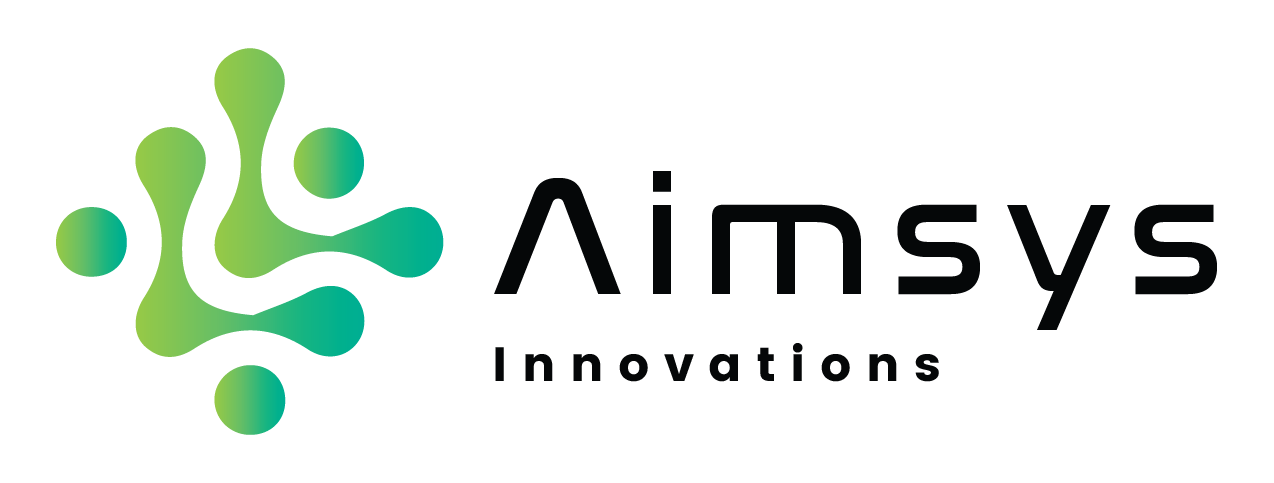Posted At: Sep 08, 2025 - 354 Views

AI Adoption Across Gender and Age Groups: Trends, Insights, and Future Outlook
Artificial Intelligence (AI) has moved from being a futuristic concept to a transformative force impacting industries, economies, and daily life. Yet, its adoption is not uniform across all demographics. Gender and age influence how individuals perceive, interact with, and integrate AI into their professional and personal activities.
This article explores how AI adoption differs by gender and age, the factors driving these variations, and what this means for the future of AI inclusivity.
1. The Big Picture: Global AI Adoption Trends
In recent years, AI adoption has accelerated due to advances in machine learning, cloud computing, and automation tools. According to McKinsey’s 2024 AI survey, over 55% of organizations have adopted at least one AI capability, with generative AI tools seeing particularly rapid growth.
However, when looking deeper, patterns emerge — some age groups and genders are more active early adopters, while others show caution or slower uptake.
2. AI Adoption by Age Categories
a. Gen Z (Ages ~18–26) – The Digital-Native Power Users
- Adoption Level:Very high
- Why:Gen Z grew up with smartphones, social media, and instant access to digital tools. They quickly adapt to AI chatbots, image generators, and AI-powered productivity apps.
- Use Cases:Content creation, coding assistance, online learning, social media optimization, gaming enhancements.
- Challenges:Overreliance on AI without deep verification of accuracy; lack of concern for ethical AI usage in some cases.
b. Millennials (Ages ~27–42) – The Pragmatic Adopters
- Adoption Level:High
- Why:Millennials are digital-savvy and see AI as a tool to save time and improve productivity. Many are in managerial or entrepreneurial roles, using AI for workflow automation, data analytics, and marketing.
- Use Cases:Business strategy optimization, marketing automation, project management, personalized customer engagement.
- Challenges:Concerns about job displacement, cost of enterprise AI tools, and maintaining a human touch in customer experiences.
c. Gen X (Ages ~43–58) – The Selective Integrators
- Adoption Level:Moderate
- Why:Gen X balances a comfort with technology with a cautious approach. They value ROI and proven results before investing in AI.
- Use Cases:Operational efficiency, decision-support analytics, compliance monitoring, predictive maintenance in industries.
- Challenges:Skills gap in advanced AI tools, cultural resistance within some workplaces.
d. Baby Boomers (Ages ~59–77) – The Cautious Observers
- Adoption Level:Low to moderate
- Why:Many Boomers did not grow up with digital technologies, leading to a steeper learning curve. AI adoption often happens through workplace requirements rather than personal choice.
- Use Cases:Healthcare AI for diagnostics, voice assistants, fraud detection in banking, investment advice tools.
- Challenges:Digital literacy gaps, trust concerns, privacy fears.
3. AI Adoption by Gender
a. Men
- Adoption Level:Slightly higher overall in early-stage AI fields, especially in technical roles.
- Patterns:More represented in AI development, engineering, and analytics roles. Tend to experiment with emerging tools and contribute to open-source AI projects.
- Barriers:Cultural perceptions in some industries, tendency toward technical over human-centered applications.
b. Women
- Adoption Level:Growing rapidly, particularly in applied AI fields such as education, healthcare, and business operations.
- Patterns:Often lead AI adoption in areas focused on user experience, ethical AI, and social impact. Women in leadership roles increasingly integrate AI into organizational strategies.
- Barriers:Gender gap in STEM education, underrepresentation in AI research, and bias in AI recruitment algorithms.
4. Key Factors Driving Gender and Age Differences in AI Adoption
- Digital Literacy– Comfort with technology strongly correlates with adoption rates.
- Economic Access– High-quality AI tools often come with subscription costs.
- Workplace Culture– Environments that encourage experimentation see higher adoption.
- Trust & Ethics– Concerns about bias, surveillance, and misuse can slow uptake.
- Representation in AI Development– Diverse creators build tools that appeal to wider audiences.
5. Bridging the Gap: Strategies for Inclusive AI Adoption
- For Age Diversity:
- Offer targeted training programs for older professionals.
- Create intuitive, no-code AI tools to lower technical barriers.
- Provide mentorship programs pairing younger and older employees.
- For Gender Inclusivity:
- Address bias in AI datasets and algorithms.
- Increase funding for women-led AI startups.
- Promote female and non-binary role models in AI education and media.
6. Future Outlook
As AI becomes more embedded in everyday life, adoption gaps by gender and age may shrink — but only if addressed proactively.
- Gen Z will likely drive mass-market experimentation with AI.
- Millennials and Gen X will lead in operationalizing AI for business.
- Baby Boomers will adopt AI in healthcare, finance, and lifestyle applications.
- Gender diversity in AI development will be crucial to avoiding systemic bias.
The future of AI adoption will not be just about who uses it, but how inclusive, accessible, and empoweringthese tools can be for all demographics
